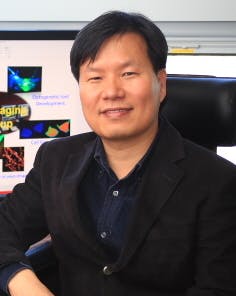Optogenetic tool can control protein functions in living cells
Researchers at the Institute for Basic Science's (IBS; Yuseong District, Daejeon, South Korea) Bio-imaging Research Group have developed an optogenetic-based technology that can control specific protein functions in living cells by using light—work that may have implications in future cancer cell research.
Related: Optogenetics tools address a growing range of applications
The technology, which the research team calls Light-Activated Reversible Inhibition by Assembled Trap (LARIAT), involves exposing cells to visible blue light from LED lamps, thereby forming protein clusters within the cells and allowing the target proteins trapped inside to inactivate protein functions.
Related: Blue light prompts protein clustering and, in turn, advances optogenetics
The research group, led by Won Do Heo, both a group leader from the Center for Cognition and Sociality and a professor at the College of Life Science and Bioengineering at the Korea Advanced Institute of Science and Technology (KAIST), has found that this technology allows scientists to inactivate critical biological phenomena, including cell migration and cell division, by using only lights, and without the assistance of chemical drug treatments or genetic modification. The whole process can be managed by simply changing the lighting to which the cell is exposed.
The researchers are hoping that this technology, which could make it possible to cease cell division, can be applied in future cancer cell and signal transduction research.
“We are already conducting research on the spread of cancer, as well as brain science in animal models with the LARIAT,” Prof. Heo says. “I believe this technology will be a breakthrough in investigating cancer treatments and the function of neurons in a complex neural network, which existing technologies have not been able to do.”
Full details of the work appear in the journal Nature Methods; for more information, please visit http://dx.doi.org/10.1038/nmeth.2940.
-----
Don't miss Strategies in Biophotonics, a conference and exhibition dedicated to development and commercialization of bio-optics and biophotonics technologies!
Follow us on Twitter, 'like' us on Facebook, and join our group on LinkedIn
Subscribe now to BioOptics World magazine; it's free!

